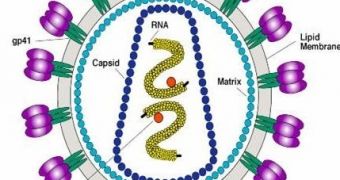At the beginning of the '80s, US received a sudden shock with the discovery of HIV. The killer was there, later it was found it originated in Africa, but how did it enter the US? Now we finally know: through Haiti, brought by just one person around 1969, much earlier than previously thought! That was the HIV-1 type, and it entered the U.S., from where it spread worldwide.
"Our results show that the strain of virus that spawned the U.S. AIDS epidemic probably arrived in or around 1969. That is earlier than a lot of people had imagined," said senior author Michael Worobey, an assistant professor of ecology and evolutionary biology at The University of Arizona in Tucson. "The actual ancestral HIV entered the U.S. long before the storied "Patient Zero". Haiti was the stepping stone the virus took when it left central Africa and started its sweep around the world. Once the virus got to the U.S., then it just moved explosively around the world.", said Worobey.
The strain reaching U.S. in 1969, HIV-1 group M subtype B, is the HIV type found, and it is the culprit of HIV epidemics in most countries outside sub-Saharan Africa and south of Equator Africa (HIV-2 is limited to West Africa). "Almost all the viruses in those countries descended from the one that emerged from Haiti," he said.
The time HIV entered the U.S. was detected though DNA analyses of archived blood samples from early AIDS victims, all recent immigrants from Haiti, and the team has published their results in the online Early Online edition of the Proceedings of the National Academy of Sciences the week of October 29.
The team also investigated DNA from another 117 AIDS patients worldwide infected with subtype B. A computer analyzed the achieved data by Bayesian statistics, predicting all possible HIV family trees.
If the HIV entered the US from Africa, the probability is 0.003 % (virtually inexistent), while the Haiti hypothesis had a probability of 99.8 %. The ancestry of most American HIV types could be traced back to just one common ancestor, the Haiti strain of 1969. "Before this study, that had not been nailed down," Worobey said.
Haiti also presented a much higher diversity of subtype B HIV strains than the U.S. did, as the HIV has a longer history there, having time to change. "The U.S., Australia, Europe plus many countries have just a subset of the subtype B diversity you see in Haiti. The virus moved from Africa to Haiti in about 1966," said Worobey. "The finding helps explain the early observations of a high prevalence of AIDS in Haiti. Knowing the gamut of diversity within subtype B could be important for effectively developing and testing vaccines that will work in Haiti", he added.

 14 DAY TRIAL //
14 DAY TRIAL //